Fermentation: Tracing the Cultural Journey from Kimchi to Sauerkraut
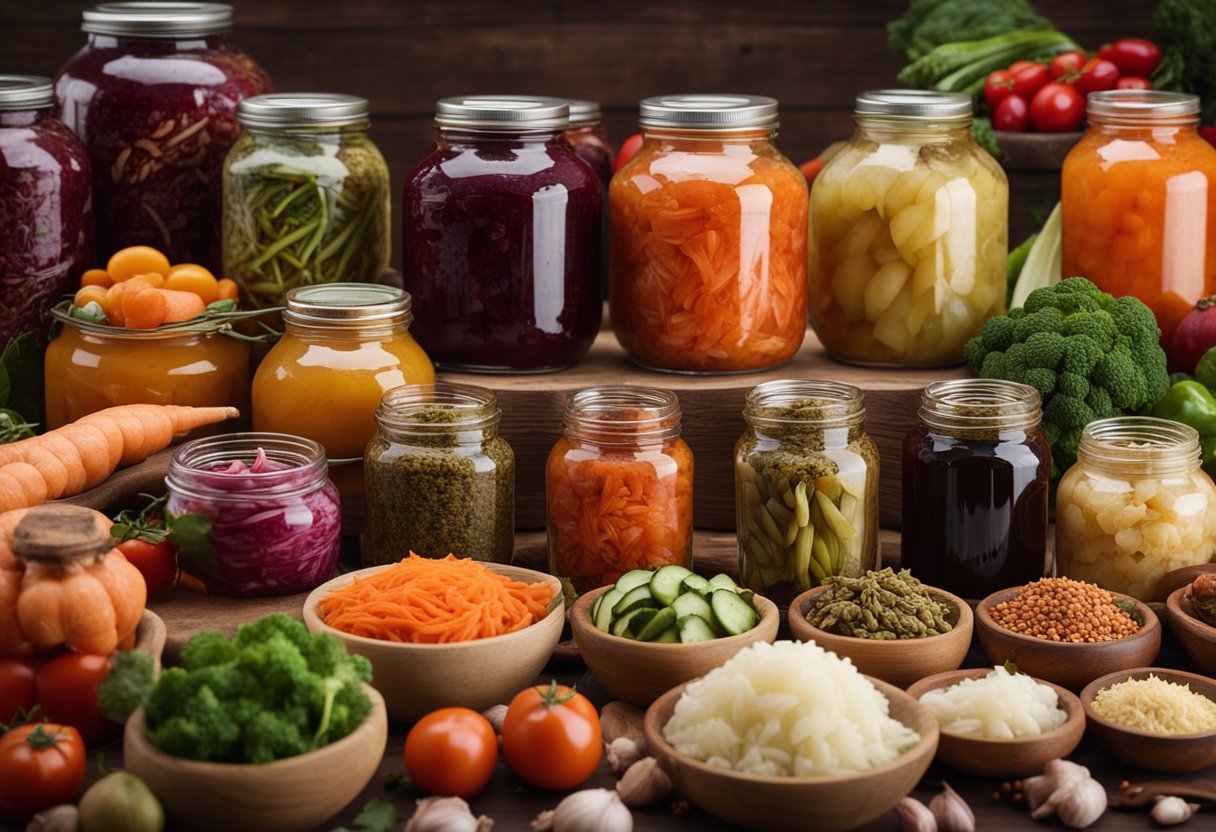
Updated On: March 28, 2024 by Maha Yassin
Fermentation is an ancient practice that transcends borders and underpins many of the world’s culinary traditions. From the tangy complexity of Korean kimchi to the robust flavours of German sauerkraut, the art of fermenting cabbage has become a staple in various cultural identities. This process harnesses the power of beneficial bacteria to transform simple ingredients into dishes rich in flavour and teeming with probiotics known to support gut health.
As we explore this gastronomic tradition, we uncover a narrative woven into the history and daily lives of people around the globe. Fermentation is more than just a method of food preservation; it is a celebration of regional biodiversity and a testament to human ingenuity in enhancing the nutritional profile of food. Each variety of fermented vegetables carries the imprint of its culture, telling a story of the region’s climate, cuisine, and community.
Historical Significance of Fermentation
Fermentation has been a foundational culinary process impacting various cultures, notably in Korea and Germany. This transformative method preserves perishables and enriches diets with distinctive flavours and health benefits.
Fermentation in Korea
The Korean diet is intrinsically linked to kimchi, a product of cultural significance and a personification of the fermentation ethos. Documented evidence suggests that early forms of kimchi were present during the Three Kingdoms period in Korea. The art of kimchi-making, referred to as kimjang, encapsulates a cooking technique and a community event that fortifies family and social ties. The diverse variations of kimchi represent a rich culinary heritage, with the practice poised on the balance of taste and tradition.
In contemporary times, kimchi remains a staple in Korean cuisine, now recognised globally. The fermentation practises have grown to symbolise Korean culture, upholding values that transcend food. Kimchi’s reputation as a traditional Korean dish has been reinforced internationally; it was certified as an international standard food in 2001 and later included in the UNESCO Intangible Cultural Heritage list.
Fermentation in Germany
In Germany, fermentation is synonymous with sauerkraut, a fermented cabbage dish that has been a staple for centuries. The origins of sauerkraut trace back to ancient Eastern Europe and China, but it was in Germany where it became integral to the national diet. The simple process of lacto-fermentation, utilised in producing sauerkraut, was essential both for its preservative qualities and for its nutritional value during long winters.
Sauerkraut is more than just food; it’s a fragment of German history that underscores the utility of fermentation. Through fermentation, sauerkraut has played a pivotal role during historical events, notably providing sailors with vitamin C to prevent scurvy during long voyages. Beyond its health benefits, sauerkraut reflects German ingenuity in food preservation and is a testament to the lasting relevance of fermentation in cultural practices.
Overview of the Fermentation Process
Fermentation is an age-old technique that transforms food through the action of microorganisms. This process not only enhances the longevity and flavour of the food but also boosts its nutritional value.
Biochemistry of Fermentation
The fermentation process involves the breakdown of organic substances by microorganisms like yeast and lactic acid bacteria. It is an anaerobic process, meaning it does not require oxygen. Instead, these microorganisms convert sugars into substances like lactic acid, ethanol, and carbon dioxide. For instance, lactic acid bacteria are pivotal in creating sauerkraut, where they convert the sugars in cabbage into lactic acid.
Role of Bacteria and Yeast
Bacteria and yeast serve as the workhorses of fermentation. Beneficial bacteria, including various lactobacillus species, produce yoghurt and kimchi. These live bacteria not merely preserve but also enhance the digestibility and vitamin content of such foods. On the other side, yeast is primarily responsible for the fermentation in bread, beer, and wine, contributing to the distinctive flavours of these items. Through these processes, microorganisms such as yeast and bacteria create a range of fermented products that are celebrated across cultures.
Key Ingredients in Kimchi and Sauerkraut
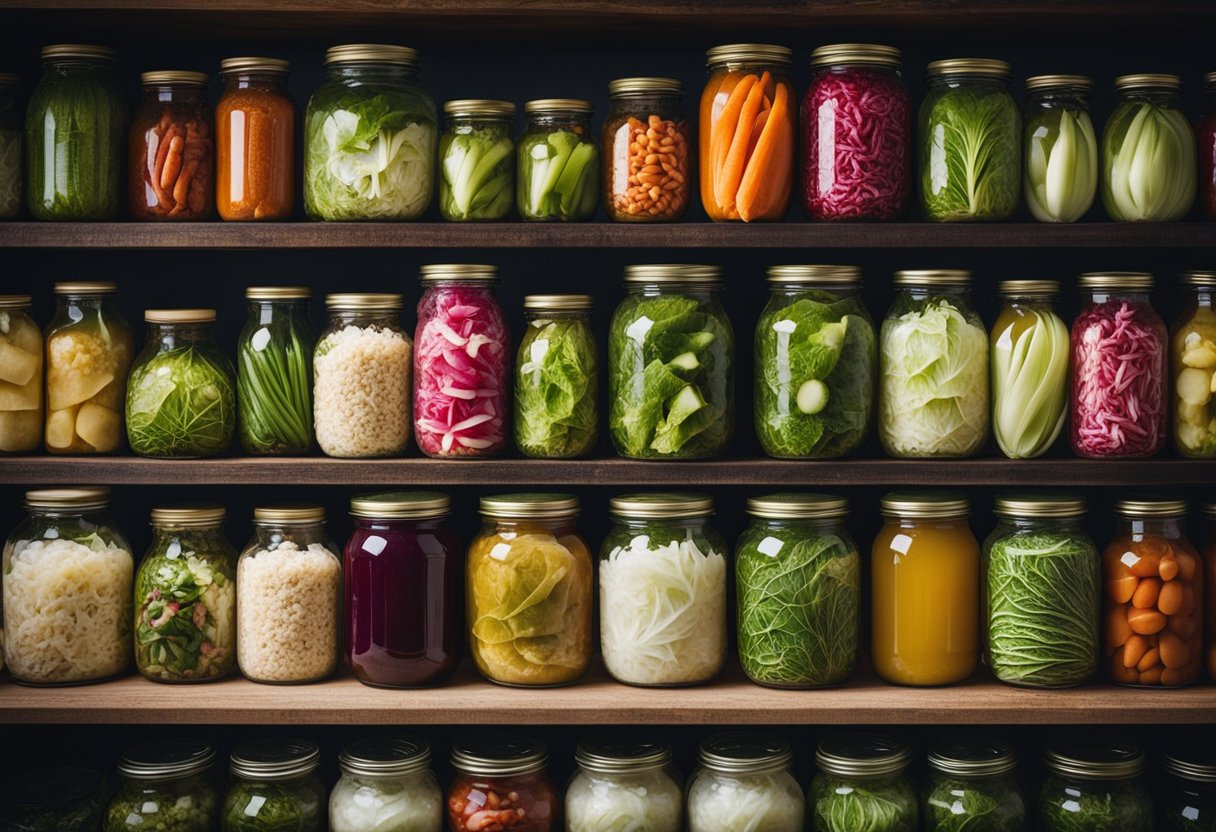
In exploring the world’s culinary traditions, we’ve encountered two iconic fermented dishes: kimchi and sauerkraut. Each boasts distinctive flavours rooted in its key ingredients.
Common Vegetables Used
Kimchi and sauerkraut both begin with cabbage as their base vegetable. Kimchi primarily uses napa cabbage (Chinese cabbage), often including radishes and scallions. In contrast, sauerkraut is traditionally made with green cabbage. Occasionally, variations of sauerkraut may incorporate other vegetables such as carrots, but it’s more common to see these in kimchi.
Kimchi
- Napa cabbage
- Radish
- Carrots (optional)
- Scallions
Sauerkraut
- Green cabbage
- Carrots (optional)
Seasonings and Spices
The seasonings distinguish these two fermented foods the most. Kimchi is known for its vibrant mix of garlic, ginger, and, specifically, gochujang chilli, which gives it a fiery kick. It also includes fish sauce and sea salt for flavour depth and fermentation. Sauerkraut, on the other hand, is simpler, relying mostly on sea salt for both taste and as a preservative to encourage lactic acid bacteria growth.
Kimchi
- Garlic
- Ginger
- Gochugaru chili
- Fish sauce
- Sea salt
Sauerkraut
- Sea salt
Nutritional Aspects of Fermented Foods
In our exploration of fermented foods, it’s important to recognise their impressive nutritional profile, including a rich probiotic content and a myriad of vitamins and minerals that contribute to overall health.
Probiotic Content
Probiotics are live microorganisms that confer a health benefit on the host when consumed in adequate amounts. They are critical for maintaining a healthy digestive system and are known to enhance the immune system. Fermented foods like kimchi are excellent sources of probiotics, which can improve digestive health and even aid in treating and preventing certain diseases.
Vitamins and Minerals
Fermented foods are often more nutritionally rich than their unfermented counterparts. The fermentation process can increase the bioavailability of nutrients, making it easier for our bodies to absorb essential vitamins and minerals. These foods provide an array of B vitamins, including riboflavin and niacin, vital for energy production. They also supply minerals like iron and magnesium, crucial for numerous bodily functions.
Preparing and Storing Fermented Vegetables
Fermentation is an ancient practice that preserves vegetables and enhances their nutritional value and flavour. We’ll explore traditional and modern techniques to prepare and store these foods, ensuring their longevity and taste.
Traditional Preparation Methods
For centuries, we have utilised fermentation to preserve vegetables, creating staples such as kimchi and sauerkraut. To make kimchi, we bring vegetables with salt, which draws out water and enables seasonings to penetrate effectively. The mixture is then allowed to ferment at room temperature before being stored in a cool place, continuing the kimchi fermentation process. On the other hand, sauerkraut fermentation involves finely shredding cabbage and combining it with salt. The cabbage releases liquid, creating the perfect environment for fermentation when packed into a fermentation vessel such as a jar or crock. A weight is often used to keep the vegetables submerged in their liquid.
Modern Techniques
Modern techniques in fermenting vegetables incorporate both traditional methods and newer processes to ensure safety and convenience. To this end, using airtight containers and precise temperature control can optimise fermentation. For example, placing sauerkraut in freezer bags and storing it at freezing temperatures can preserve it for 8-12 months, according to advice found on how to store fermented sauerkraut. Additionally, the inclusion of sugar as a preservation method has gained popularity in some fermentation recipes as it can provide food for beneficial bacteria during the fermentation process.
By adhering to these time-honoured yet evolved practices, we ensure the rich cultural heritage encapsulated within each jar of fermented vegetables is preserved for future enjoyment.
Regional Variations of Fermentation
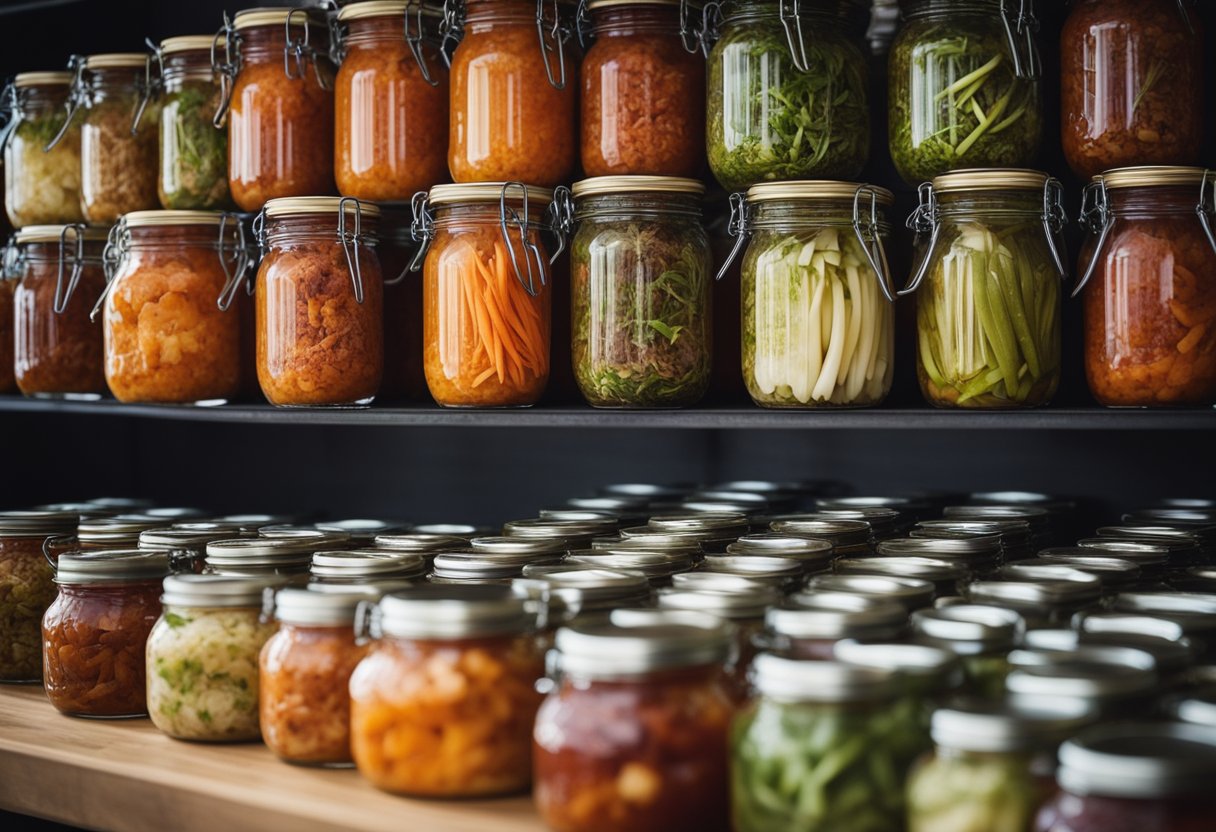
Fermentation is a culinary art form that varies widely from region to region, with each area developing its distinct flavours and techniques. These variations reflect the local culture, ingredients, and history, resulting in a rich tapestry of fermented foods across the globe.
Kimchi Varieties
Kimchi, a cornerstone of Korean cuisine, is a traditional fermented dish that boasts a multitude of variations. The most prominent variant is baechu kimchi, often called cabbage kimchi. This kimchi style includes key ingredients like green onions and daikon in a blend of spices that has secured kimchi’s place as a beloved staple. For those seeking an organic or vegan option, several adaptations of kimchi exist that cater to these dietary preferences. The beauty of kimchi lies not just in its taste but also in its adaptability and the cultural heritage it represents.
Sauerkraut Adaptations
Sauerkraut adapts itself to different regional influences, absorbing local flavours and ingredients. A notable hybrid is kimchi-style sauerkraut, which is inspired by its Korean counterpart and carries a unique twist on the traditional European fermented cabbage. This variation incorporates similar spices and techniques found in kimchi production, crafting a cross-cultural fermented delicacy. Whether served as a classic ferment or with innovative twists, sauerkraut remains a cherished food that showcases the history and simplicity of fermentation.
The art of fermentation connects cultures and exemplifies the creativity of culinary practices worldwide. These regional variations, from kimchi to sauerkraut, not only enrich our diets but also our understanding of cultural identity and gastronomy.
The Science of Taste in Fermentation
In the world of fermentation, the convergence of microbes, ingredients, and time culminates in a complex array of tastes and textures distinctly characteristic of foods like kimchi and sauerkraut. Our palette engages in a sensory adventure, accentuated by the spicy kick of gochugaru and the refreshing crunch of fermented vegetables.
Exploring Flavours and Textures
The fermentation process is a playground for developing flavours ranging from spicy heat to a sweet mellow roundness. Substances like gochugaru in kimchi contribute to its heat and deep red colour. Meanwhile, the sour profile is a natural by-product of lactic acid fermentation, a hallmark of both kimchi and sauerkraut.
- Umami and tangy notes are introduced through the combination of ingredients like:
- Seafood extracts or anchovy paste in kimchi
- Apples or carrots in sauerkraut for a subtle sweetness
The textures of fermented foods vary tremendously, stemming from the choice of components and their preparation. Radishes and carrots often retain a delightful crunch after fermentation, whereas some ingredients may soften but still provide a satisfying bite.
Culinary Applications
While excellent as standalone items, Fermented foods shine as condiments and integrated elements within broader culinary contexts.
- Kimchi stars as both a side dish and a dynamic ingredient in dishes such as stews and bibimbap.
- Sauerkraut has its traditional roots as a side dish but also enhances flavours when served alongside sausages or layered within sandwiches.
The versatility of fermented products is endless. They lend themselves well to creative experimentation in the kitchen, contributing to a more rounded and distinctive taste profile in many dishes. The microbes responsible for fermentation indeed perform a sophisticated dance, transforming the ordinary into the extraordinary.
Health Implications of Fermented Foods

We take a close look at how fermented foods, from Korean kimchi to German sauerkraut, are influential in promoting health. These foods have been found to offer considerable digestive health benefits and positively impact the immune system due to the presence of probiotics and lactic acid bacteria.
Digestive Health Benefits
Fermented foods are rich in probiotics—beneficial bacteria that play a crucial role in digestion. The lactic acid bacteria, such as Lactobacillus, found in these foods, help break down the nutrients into more digestible forms. Regularly consuming fermented foods has been associated with improved gut health, including enhanced digestion and absorption of nutrients. For instance, studies indicate that kimchi can have a significant effect on health, particularly in the area of digestion.
Impact on the Immune System
Beyond digestion, the probiotics in fermented foods like kimchi are vital for our immune system. The bacteria help develop and maintain the gut’s immune response. A diverse gut microbiome, bolstered by these probiotics, has been linked to decreased molecular signs of inflammation. This points to a larger role for fermented foods in immune health and potentially in reducing inflammation-related diseases.
Cultural Significance and Food Identity
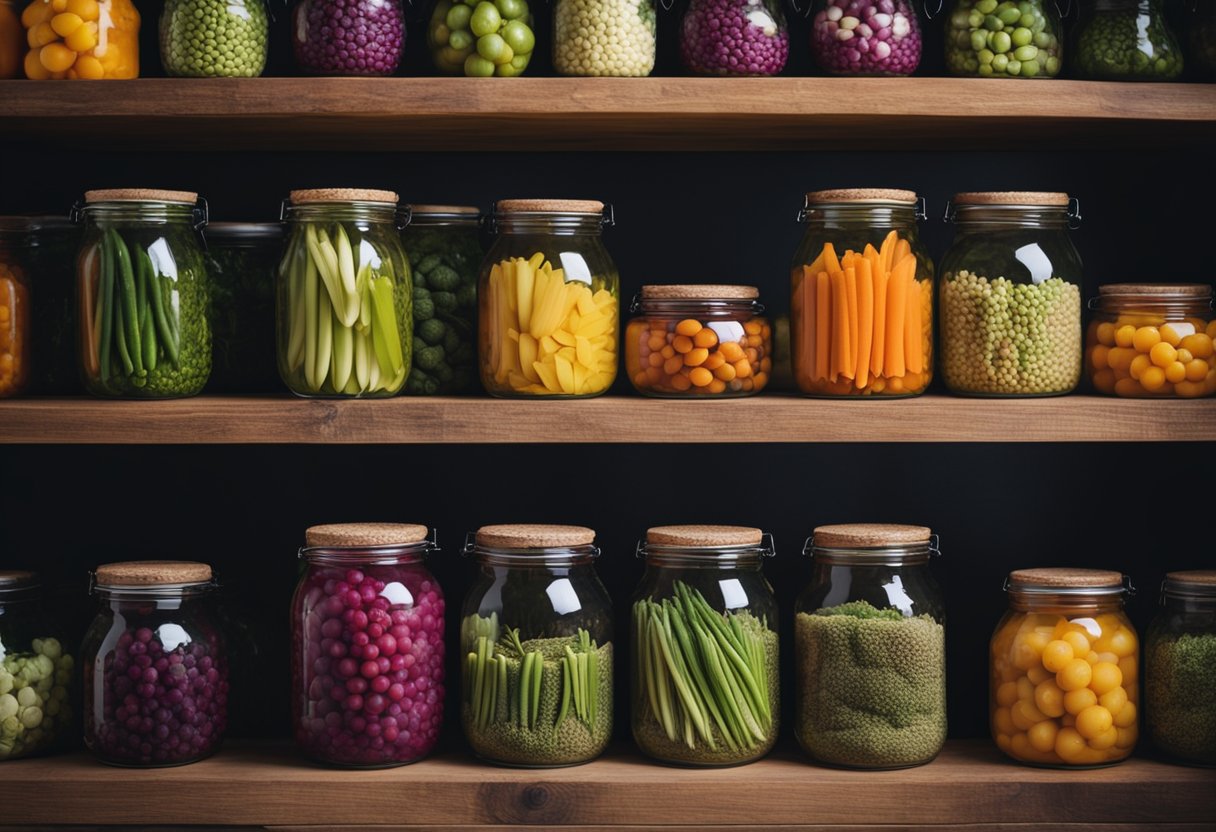
Fermentation is more than just a method of preserving food; it’s a cultural emblem that underscores the identity of national cuisines and showcases the social and economic facets of traditional practices.
Fermentation in National Cuisine
In Korea, kimchi is a cornerstone of Korean cuisine, a fermented cabbage dish that holds deep cultural importance. It’s not just a side dish; it’s a symbol of Korean heritage, with each region boasting its own unique variation. This healthy food represents Korea’s tradition and its adaptation in incorporating various vegetables to create a multitude of flavours and meanings.
Conversely, sauerkraut, akin to kimchi, is a form of fermented cabbage deeply rooted in the food identity of several European countries. As a condiment or side, it transcends being mere food to become a part of the cultural fabric, reflecting the community’s values and history through its presence on the dinner table.
Social and Economic Impact
The process and production of fermented foods like kimchi involve communal activities such as kimjang, which connect entire villages, offering a chance for social bonding and cultural transmission. These practices have significant social impacts, reinforcing community ties and national identity.
From an economic standpoint, the exportation of culturally significant fermented foods boosts the country’s economy while promoting cultural awareness globally. Domestic markets thrive as these traditional foods often require specialised ingredients and local know-how to produce, supporting local farmers and producers.
Fermentation Beyond Kimchi and Sauerkraut
Though kimchi and sauerkraut are well-known fermented foods, the world of fermentation spans far beyond these staples, encompassing a diverse range of flavours and traditions across various cultures.
Other Notable Fermented Foods
Our culinary exploration reveals that miso, a traditional Japanese seasoning produced by fermenting soybeans with salt and koji, is integral to many Japanese dishes. Pickles are enjoyed globally, gaining their tangy taste through lacto-fermentation in brine. In the realm of bread, sourdough relies on dough fermentation using naturally occurring lactobacilli and yeast.
Scandinavia offers fermented seafood like lutefisk, while yoghurt remains a fermented favourite packed with beneficial probiotics. Caraway seeds are often used to flavour sauerkraut and certain types of rye bread, adding to the complexity of the fermentation process. On the other hand, Asia is renowned for soy sauce, which is made from fermented soybeans, wheat, salt, and fermenting agents.
Fermentation in Beverages
Turning to beverages, the craft of fermentation is pivotal. Tea lovers are familiar with kombucha, a fermented drink made with tea, sugar, bacteria, and yeast, linked to numerous health benefits. Regarding alcoholic drinks, we notice that rice plays a crucial role in producing sake, a Japanese rice wine made by fermenting rice that has been polished to remove the bran.
From sausages that undergo fermentation during the curing process to enhance flavour and safety to distinct cod dishes preserved through fermentation, our journey through fermented foods and beverages illustrates the boundless creativity in gastronomic traditions worldwide.
Innovations in Fermentation Technology
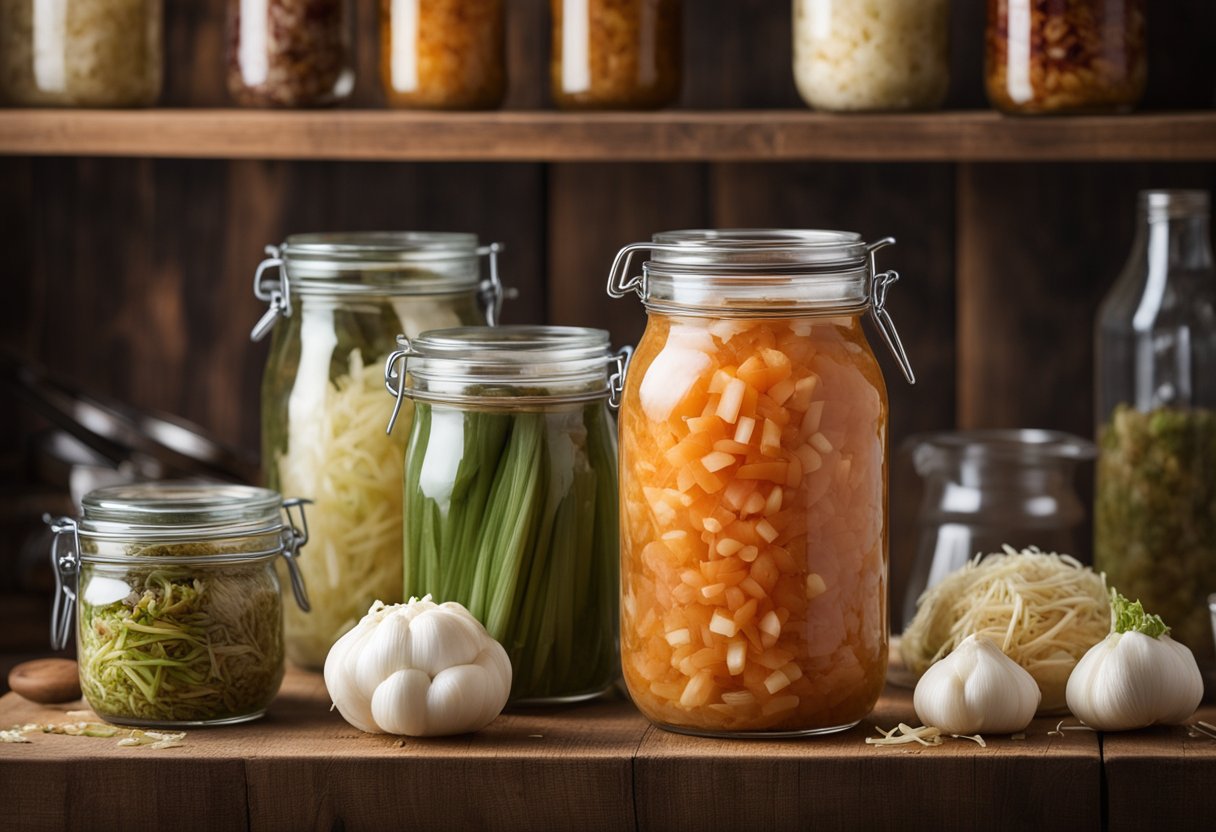
The realm of fermentation technology is ever-evolving, with noteworthy advancements in both home practices and industrial applications that enhance the quality and variety of fermented foods.
Advancements in Home Fermentation
Home fermentation has seen a renaissance, with innovative tools greatly simplifying the creation of traditional staples such as homemade kimchi and homemade sauerkraut. Enthusiasts can now utilise starter kits and all-in-one fermentation vessels that provide an anaerobic environment essential for successful fermentation processes. This encourages experimentation with local ingredients and ensures consistent results and safety.
Industrial Fermentation Trends
On the industrial front, researchers are embracing recent developments in fermentation technology that strive for sustainability and efficiency. Novel bioreactors and automation have standardised production, improving fermentation operations’ scalability and environmental footprint. The industry is also exploring multi-omics potential to unlock new directions in food science, illuminating the complex microbial interactions and leading to innovation in fermented product ranges.
FAQs
In this section, we address some of the most common queries about the fermentation process of both kimchi and sauerkraut, focusing on their distinct methods, necessary bacteria, traditional steps, duration, success factors, and health benefits.
How does the fermentation process of kimchi differ from that of sauerkraut?
The fermentation of kimchi typically includes a variety of spices and seasonings, such as chilli peppers, garlic, ginger, and fish sauce, which are blended with the main ingredient—usually Napa cabbage or radish. This mixture is then left to ferment, with the distinct spices contributing to kimchi’s unique flavours. In contrast, sauerkraut is made by mixing shredded cabbage with salt and allowing it to ferment, producing its characteristic tart flavour without the use of additional spices.
What types of bacteria are essential for the fermentation of kimchi?
Lactic acid bacteria, particularly from the genera Lactobacillus, Leuconostoc, and Weissella, are essential for the fermentation of kimchi. These bacteria convert sugars into lactic acid, which acts as a natural preservative and gives kimchi its tangy taste.
What are the traditional steps in fermenting kimchi?
The traditional steps in fermenting kimchi involve selecting and preparing vegetables, often bringing them first and then mixing them with a seasoned paste. This paste can include ingredients like chilli powder, fish sauce, crushed garlic, and sugar. Once combined, the kimchi is tightly packed into jars and left to ferment at room temperature to allow the flavours to develop before refrigeration.
How long should kimchi be left to ferment at room temperature for optimal taste?
Kimchi should typically be left to ferment at room temperature for about 1 to 5 days, depending on the desired level of sourness and the ambient temperature. After this initial fermentation period, it is usually stored in the refrigerator to slow the fermentation and maintain the preferred taste over time.
Which factors contribute to successful kimchi fermentation?
Successful kimchi fermentation is largely influenced by temperature, salt concentration, and the quality of ingredients. Keeping a consistent, moderate temperature and maintaining proper salt levels ensures the growth of beneficial lactic acid bacteria while preventing spoilage. Using fresh, quality ingredients is also crucial for achieving the best flavour and texture in the final product.
How do the health benefits of kimchi compare with those of sauerkraut?
Both kimchi and sauerkraut are rich in vitamins, particularly vitamin C, and are excellent sources of dietary fibre. They contain live lactic acid bacteria that are beneficial for digestive health. While the two share many health benefits, kimchi’s diverse ingredients, including garlic and chilli, may provide additional nutritional advantages, such as antioxidants and potential anti-inflammatory properties.






